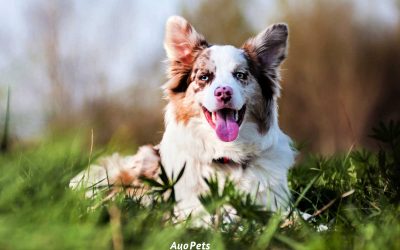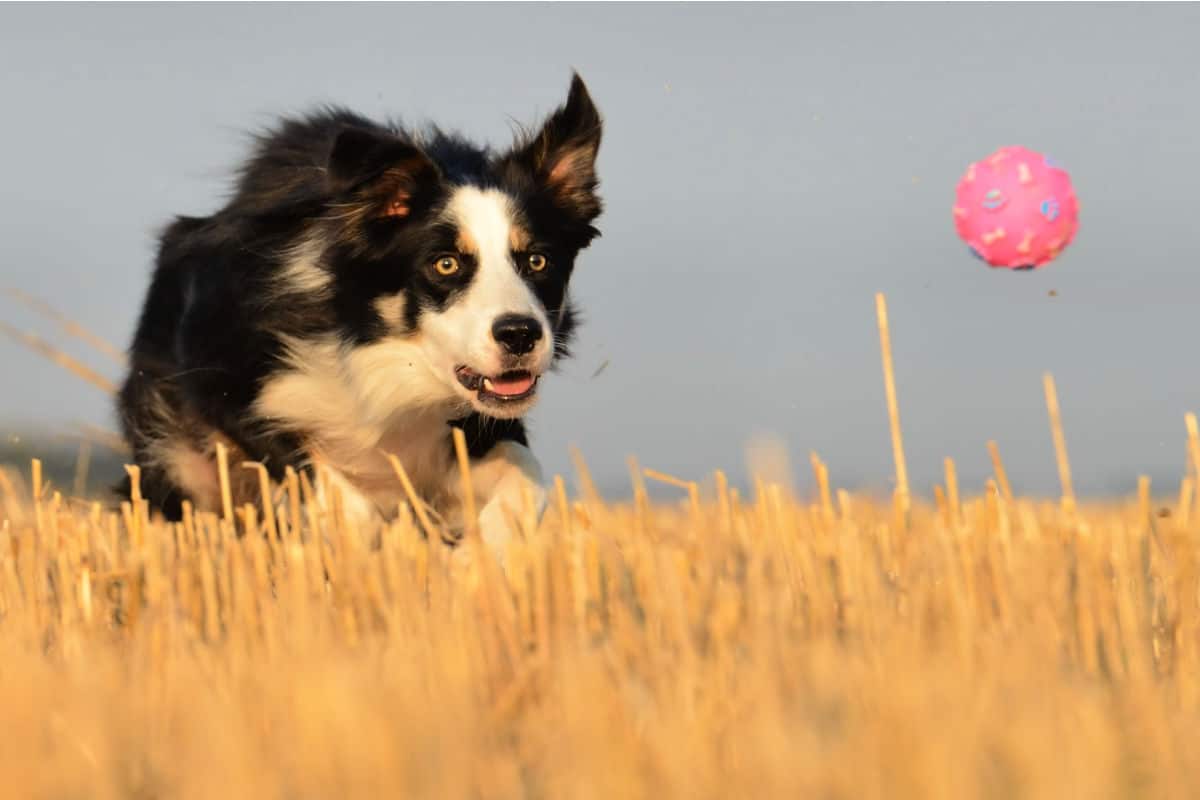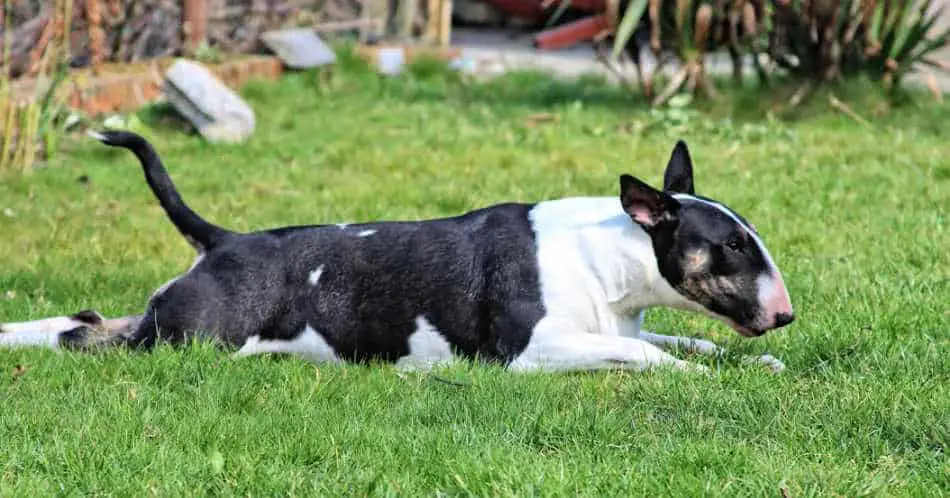I have two dogs that are more or less the same height. One dog has a slender, agile build and the other is stocky and robust. I’ve started noticing how other dogs at the dog park all have different chests, so I looked into it and found out that there are three types of dog chests:
A dog can have a deep chest, a barrel chest, or a round chest, depending on the shape of their rib cage. Deep-chested dogs have narrower, taller ribcages. Barrel-chested dogs have wider, shorter ribcages. Most dogs have round chests that are not tall enough or short enough to be deep or barrel chests.
Dogs were bred for different reasons, which is why they have different chests. But chest shape has nothing to do with the dog’s size – a small dog will just have a smaller chest than a bigger dog, even if both dogs have a ‘deep’ chest.
There’s no one size fits all here so let’s explore where a dog’s chest is, how to determine the chest type, why dogs have different chests, and the differences, traits and health concerns of deep-chested and barrel-chested breeds…
Where is a dog’s chest?
A dog’s chest runs from the bottom of the dog’s neck to the stomach. The chest includes the dog’s ribs, the dog’s spine from the shoulders’ points to the end of the ribs, and the dog’s breastplate that connects some of the ribs together in the ribcage, opposite the spine.
In the picture below, you’ll see a red area towards the front of the dog. This red area shows where a dog’s chest is found:
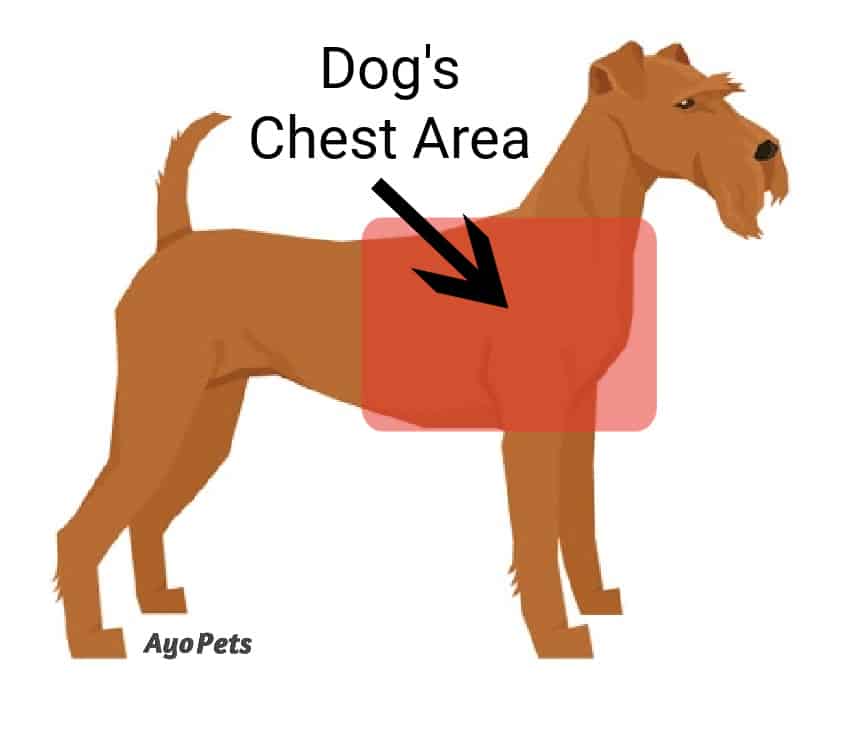
What is a round-chested dog?
Most dogs have round chests. When looking at these dogs from the front, their ribcage is round in shape, like a circle. Their chests may be slightly deep or barrel shaped, but not enough for them to be classified as deep- or barrel-chested dogs.
The red circle on the Labrador in the following picture shows how a typical round-chested dog looks from the front:
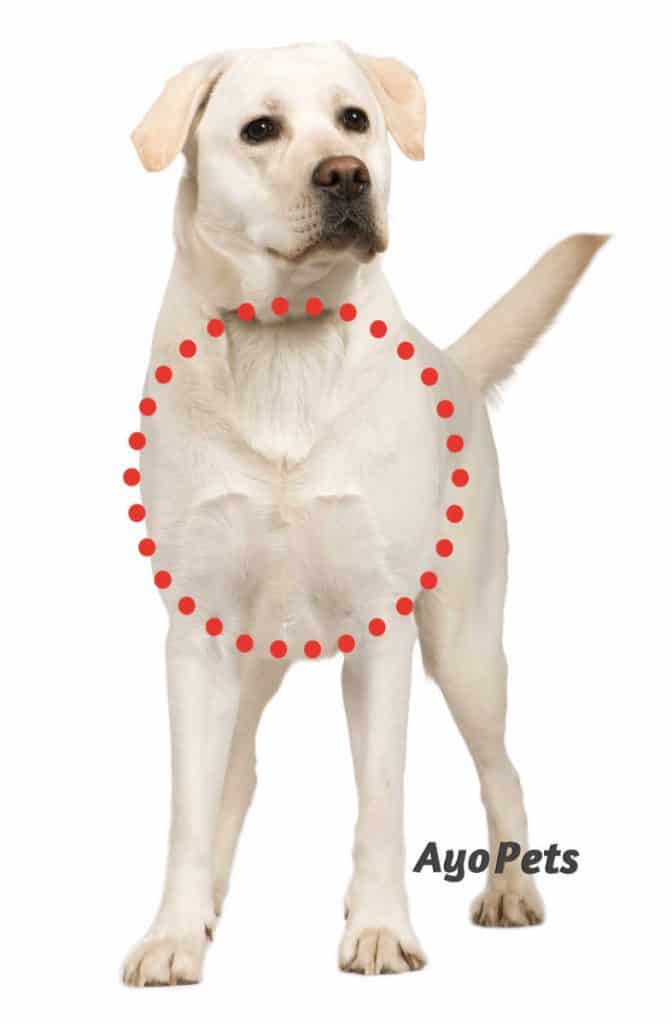
Round-chested dogs were bred for many different jobs, such as herding, swimming, or acting as companions. Some dogs that are typically round-chested are Corgis, Golden Retrievers and Labradors.
Many people wonder if Labradors are round-chested or barrel-chested dogs.
Labradors are round-chested dogs, but some breeders have introduced barrel chests into their breeding lines over time. This is why some Labradors appear more barrel-chested than round-chested, though this is not true to the breed.
We know that dogs were bred with certain chests depending on what the dog was used for.
Labradors were bred to help fisherman by carrying nets, swimming in and fetching fish from the icy ocean, and keeping fishermen company. None of these ‘jobs’ needed a deep or barrel chest, so Labradors were bred with broad, round chests.
What is a deep-chested dog?
A deep-chested dog has a narrow, tall ribcage that is egg- or oval-shaped from the front. The height of a dog’s ribcage is called the ‘depth’. A ‘deep chest’ means that the ribcage is higher from top to bottom than it is wide, from left to right. Deep chests fall as low as, if not lower than, the dog’s elbows in its front legs.
Here is a picture of a deep-chested Great Dane dog – see how the chest has an egg-like, elliptical shape to it, with a lot of space between the top and bottom of the ribcage?

The following picture shows the same deep-chested Great Dane from the side – see how low the chest falls compared to the dog’s elbows?
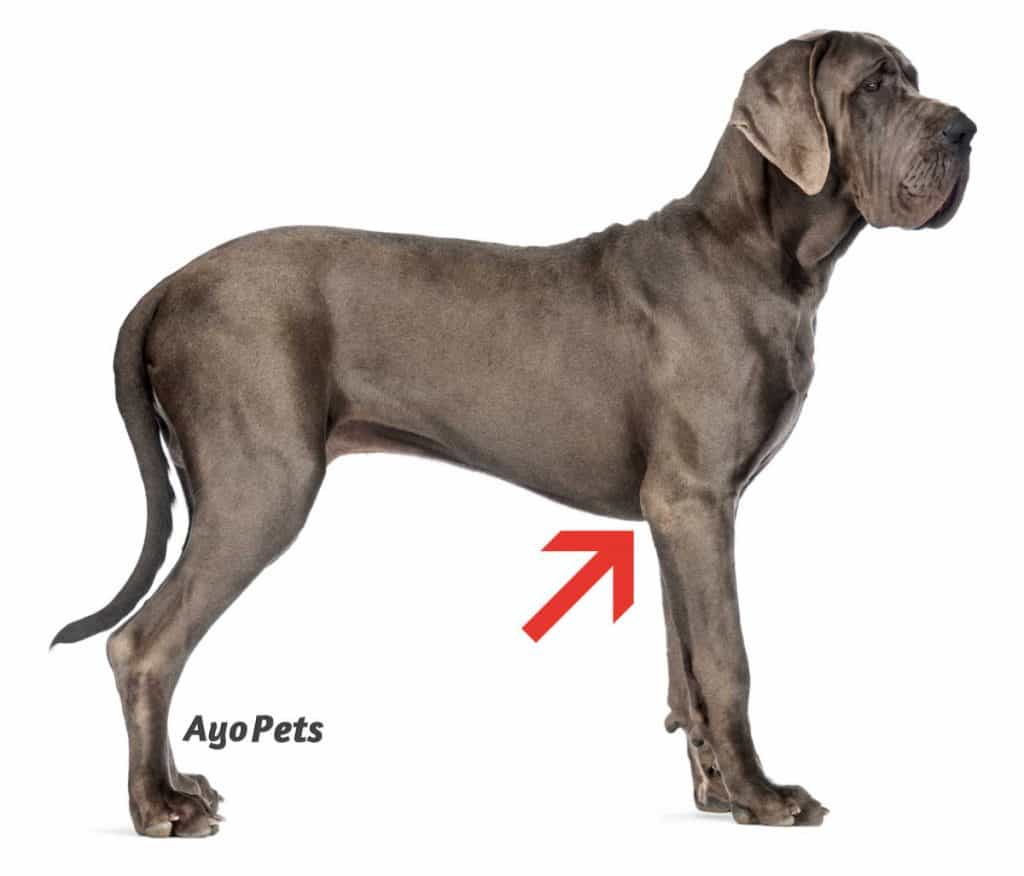
A dog’s size doesn’t determine its chest type. Any size dog can be deep-chested, even small- and medium-sized dogs. A deep chest is narrower and taller than a round or barrel chest.
Dogs with deep chests were often bred for running, speed and endurance. The shape of the deep chest gives the dog’s lungs a lot of space to expand, so the dog can take deeper breaths. Deeper, slower breaths provide more oxygen to the dog’s muscles, which gives the dog energy to run faster or over long distances.
Many deep-chested dogs love running, agility games, and playing fetch – Click here to see the full list of dog breeds that love playing fetch.
But all the space in a larger dog with a high ribcage makes it easier for the dog’s stomach to fill up with gas or fluids, then turn over. This is commonly known as bloat or GDV (Gastric Dilatation and Volvulus). GDV is a life-threatening condition and requires medical attention.
One way to combat this is to feed your deep-chested dog with a slow feeder – click here to find out how slow feeders work. Another is not to walk your dog right before or after eating.
You’ll also need to take extra care to manage and monitor what your dog eats if your dog develops pica – an eating disorder where dogs eat non-food items. Here’s more info about pica and how to manage it.
Dog breeds and breed types that are usually deep-chested
- Akitas
- Basset Hounds
- Bloodhounds
- Boxers
- Dachshunds
- Dobermans
- Doberman Pinschers
- German Shepherds
- Gordon Setters
- Great Danes
- Greyhounds
- Irish Setters
- Irish Wolfhounds
- Labradors
- Newfoundlands
- Old English Sheepdogs
- Retrievers
- Rottweilers
- Saint Bernards
- Sighthounds
- Standard Poodles
- Weimaraners
What is a barrel-chested dog?
A barrel-chested dog has a wide chest in front, which is shaped much like a barrel. The top and bottom of the chest area are fairly straight and even, with wider rounded shoulders on the sides. The bottom of the chest is usually in line with or above the elbows of the front legs.
Barrel-chested dogs usually have thicker necks and their front legs are further apart than deep- and round-chested dogs.
Here is a picture of a barrel-chested Boxer – see how the chest has a barrel shape to it?
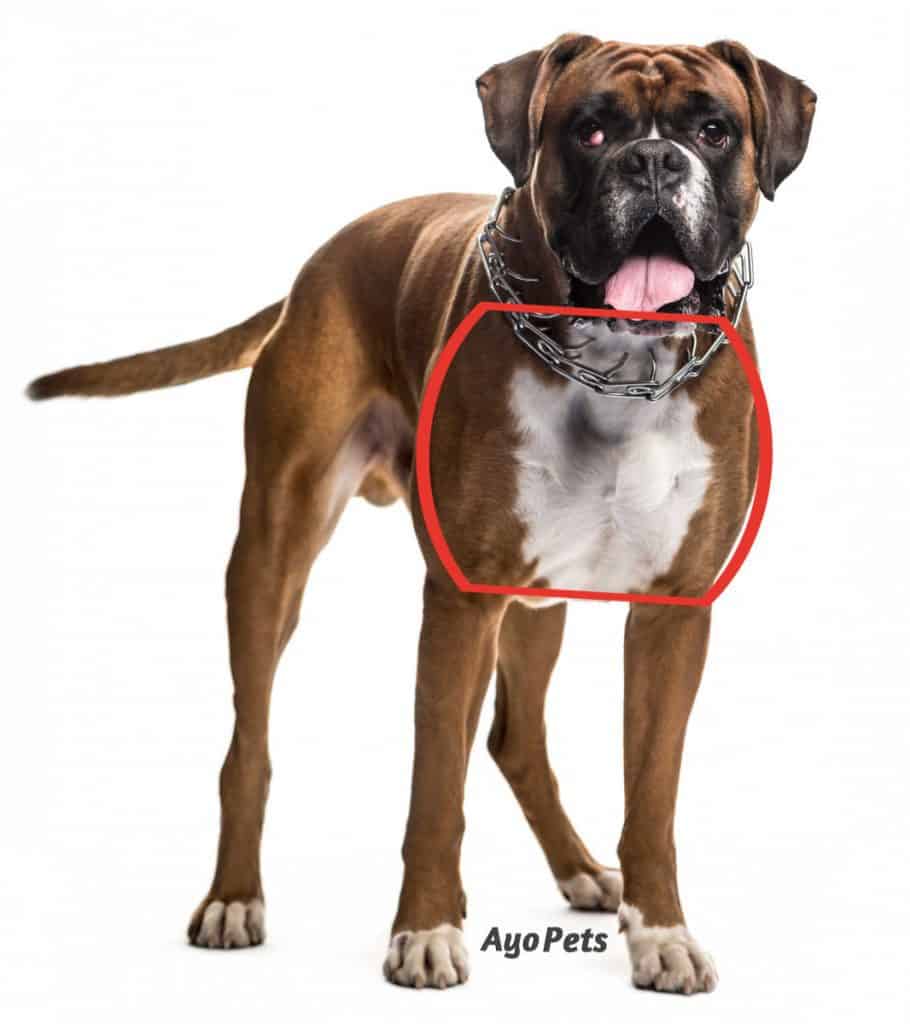
A dog’s size doesn’t determine the type of chest they have. Any size dog can be barrel-chested, even small- and medium-sized dogs.
Bigger barrel-chested dogs often have a lot of strength and power in the front of their bodies, where a lot of their muscle sits. Medium and bigger dogs with barrel chests were often bred for baiting, hunting, fighting, digging, or guarding.
But some smaller barrel chests, such as pugs, were simply bred to be companions.
Barrel-chested dogs often love playing hide and seek games or chewing on strong dog toys. Click here to find out how to get your dog’s toys sparkling clean without harming your dog.
Dog breeds and breed types that are usually barrel-chested
- Boston Terriers
- Boxers
- English Bulldogs
- French Bulldogs
- Keeshonds
- Mastiffs
- Pit Bulls
- Pugs
- Rottweilers
- Staffordshire Bull Terriers
How to determine if a dog is deep-chested or barrel-chested
The easiest way to determine if a dog has a deep chest or a barrel chest is to look at a standing dog from the front and side. From the front, look at the shape of the chest area. From the side, check where the rib cage ends in relation to the dog’s elbows and how the stomach looks.
Not every dog has a deep or barrel chest. Most dogs have round chests that aren’t classified as deep or barrel chests, though they may have slightly deeper or slightly more barrel-shaped chests than other dogs.
Mixed breed dogs could inherit the chest of any breed in their bloodline. You can use the chest shape to get a better idea of what breeds are in a dog, but the only way to know for sure is to take a dog DNA test. Click here to find out how much a dog DNA test costs and what you’ll find out for your money.
Here are some of the differences to look for between deep-chested and barrel-chested dogs:
| Deep-chested dogs | Barrel-chested dogs |
| Have narrow chests that are taller than they are wide. From the front, deep-chested dogs have an elliptical or egg-shaped chest | Have wider chests than deep-chested dogs. Barrel-chested dogs often have rounder chests and/wider shoulders |
| Usually more athletic build for running and endurance | Often a stockier build for digging, hunting, etc. |
| Bottom of the ribcage ends in line with or below the elbows in the front legs | Bottom of the ribcage ends in line with or above the elbows in the front legs |
| There is an abdominal tuck, where the stomach looks higher than the bottom of the rib cage from the side | There is little or no abdominal tuck, where the stomach is lower than, in line with, or only slightly higher than the bottom of the ribcage |
| Front legs are fairly close together | Front legs are quite far apart |




